Dirt from Devil’s Gate haulers causes dust-up among locals, county
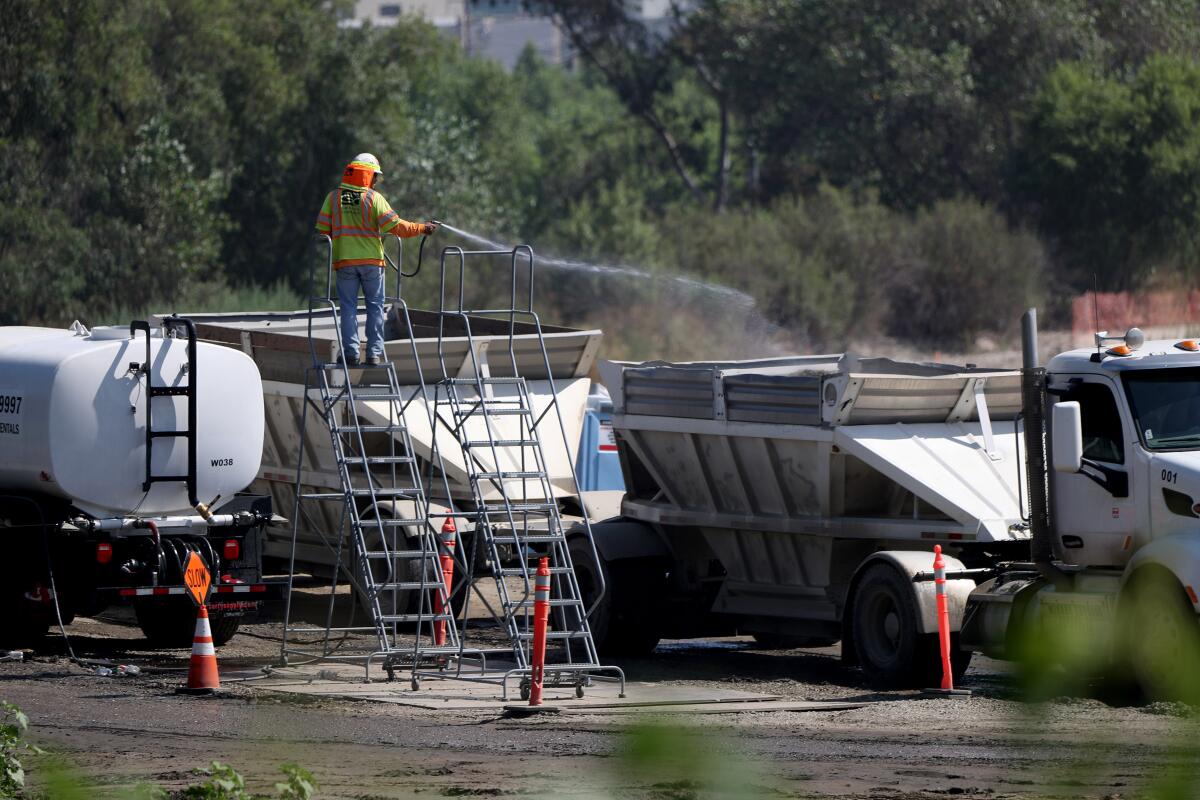
- Share via
Every week, Bob Frank — whose Hillside School and Learning Center has a ringside seat to the years-long Devil’s Gate Dam sediment removal project happening near his Oak Grove Drive campus — grabs a hose and gets to work.
He washes away the patina of dust that has accumulated on the school’s driveway and atop the leaves of nearby plants from an endless convoy of diesel trucks that pass by his campus every few minutes, headed to dump sites off the Foothill (210) Freeway.
“I’m trying to reassure parents it’s OK for their children to come to Hillside,” said Frank, who’s spent his own funds to purchase air filters and monitors for the site. “We’re doing everything we can to keep the air inside as clean as possible.”
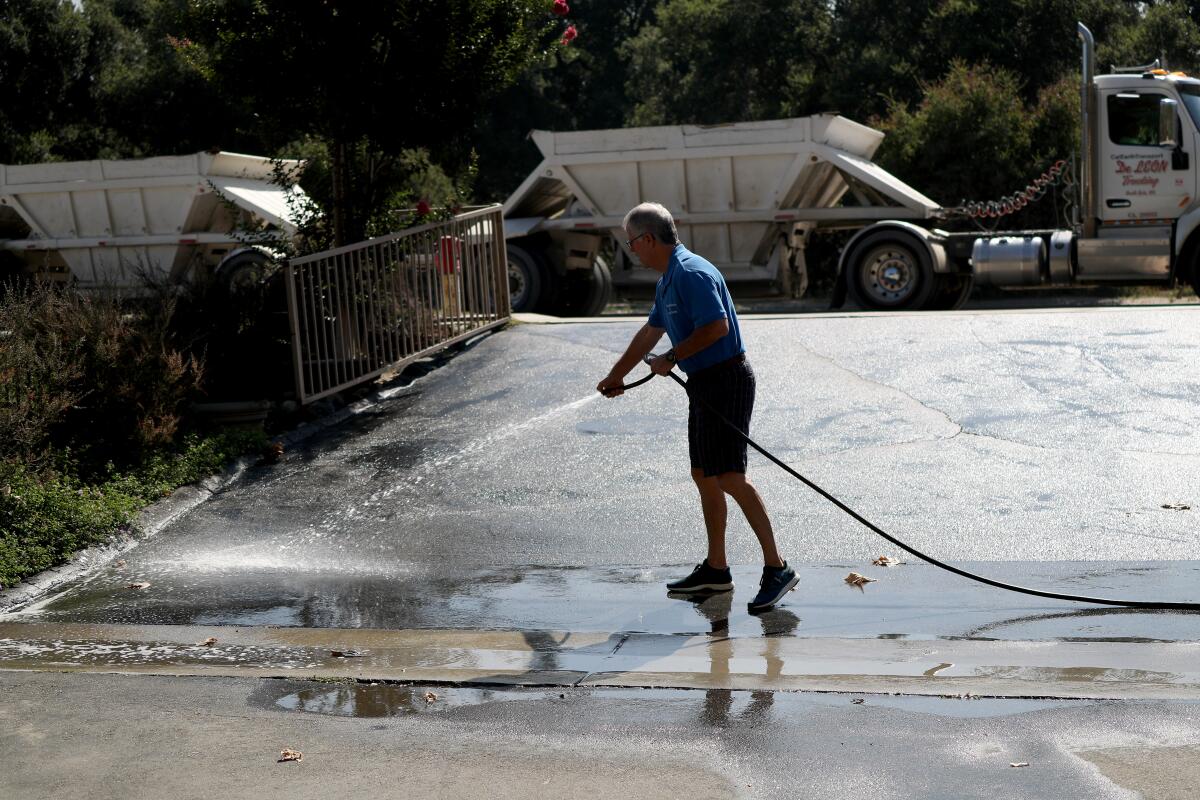
While the county’s efforts to measure air quality at the dig site and nearby La Cañada High School have returned no significant particulate matter readings (only one “excedent” day was recorded on July 22) concerns about fugitive dust expelled from trucks and kicked up by vehicle traffic are on the rise.
Public Works officials are using four water trucks to spray portions of Oak Grove Drive, douse uncovered truck loads before they leave and dampen the excavation site itself. Plans for a wheel-wash station for exiting big rigs were approved in June, though installation won’t occur until mid-August at the earliest, county officials confirmed.
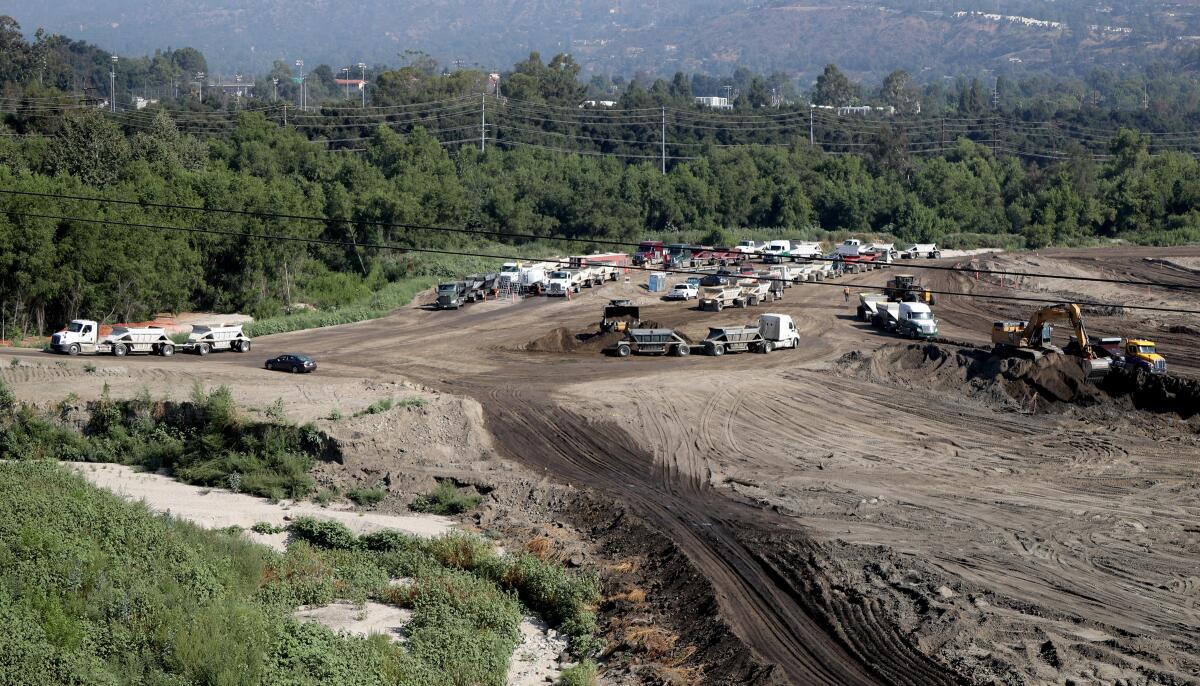
Next Tuesday, members of the citizen advocacy group LCF 4 Healthy Air will present a project update to the La Cañada Flintridge City Council. Group co-founder Liz Krider said while air-quality monitors measure particulate matter levels, dust readings only track notable differences from one station to another and do not address dust levels outside the reservoir.
“Fugitive dust is an air quality issue,” Krider said Tuesday. “I can see cars going on Oak Grove from the high school and there’s little plumes [of dust], even after the job is done for the day — more dust in the air means you have more little vehicles for pollutants.”
La Cañada Mayor Pro Tem Greg Brown, who makes regular trips around the dig site, said the dirt from the project seems to be accumulating more as summer progresses. Meanwhile, water trucks spraying Oak Grove transform dust into mud that clings to vehicles and other surfaces.
Brown said one solution would be to install the promised wheel-washing station and ensure all trucks are covered with tarps, as opposed to keeping loads 6 inches or more from the open tops of truck bins.
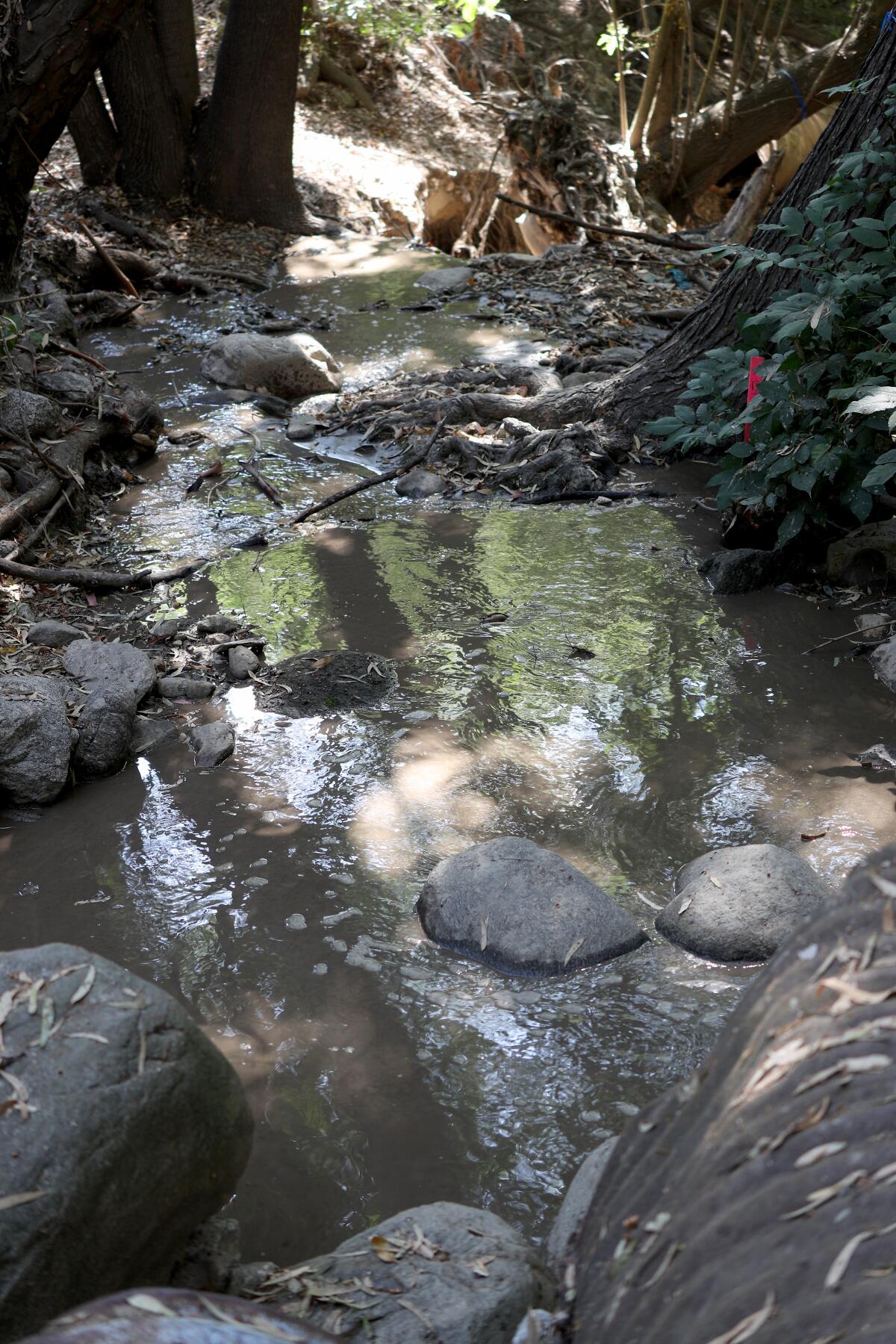
“It’s not hi-tech, and it doesn’t require any drastic techniques — I think it’s something that ought to be done,” he said. “[The county] could save on having all the water trucks if they had the wheel washers and the trucks covered.”
Only 5% of haulers working at the site have covers, county officials estimated.
As of Wednesday, 48 hauling days in, trucks had taken away some 235,000 cubic yards of sediment. In July, an average of 77 trucks made an average of 366 round-trip truck trips daily, according to department figures.
Dan Lafferty, a deputy director with Public Works, said the department has made every effort to address and mitigate issues going into the project and as they’re raised by residents and local officials.
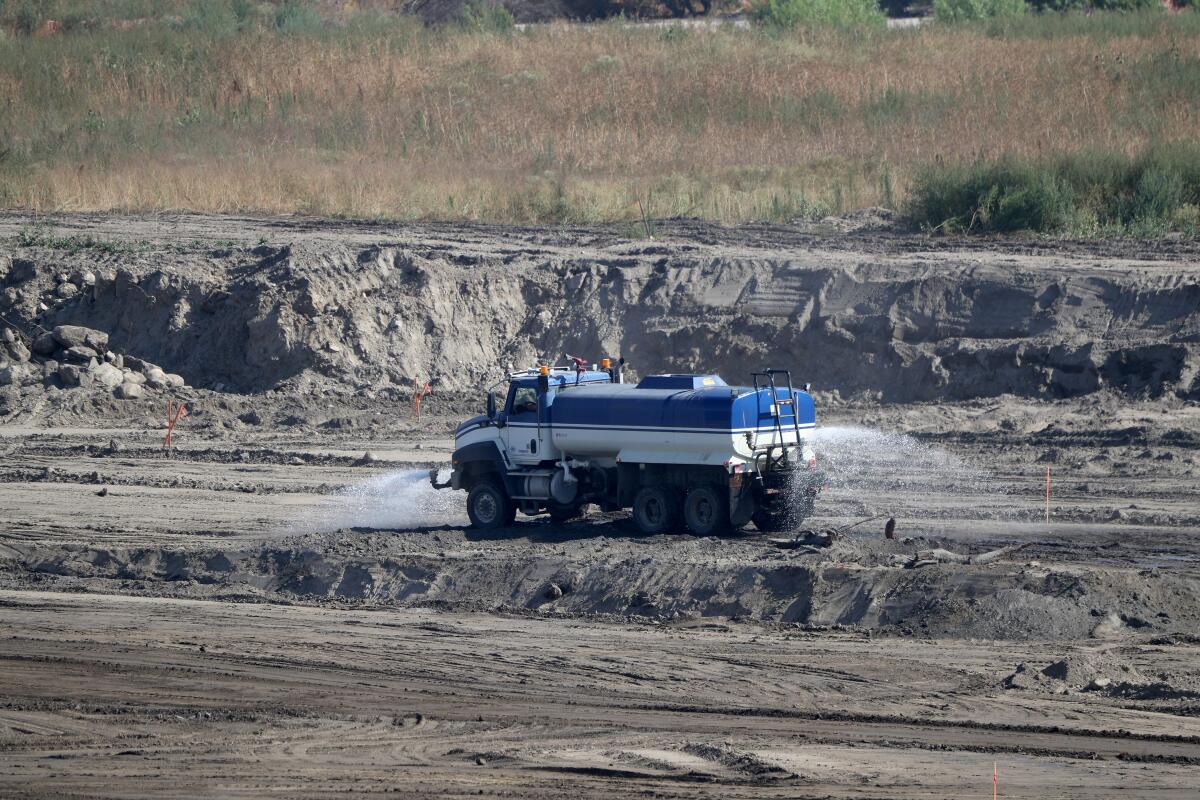
Finding trucks that comply with the required 2010 emissions standards and meet other certification mandates has made it difficult to build a fleet, he said. Project specifications signed off on by contractor the Griffith Co. under a $66-million contract do not include covered vehicles, but other adjustments to the projects may be possible.
“There are precautions we’ve written into those specifications that still present opportunities for us to work with the contractor,” said Lafferty. “There are one or two more adjustments we can make before we’re at the point where there’s another step that must be taken.”
Devil’s Gate settlement talks continue
As the work around Devil’s Gate Dam continues, a long-battled lawsuit between the county and local environmental groups, plaintiffs Arroyo Seco Foundation (ASF) and the Pasadena Audubon Society, may be bearing fruit as both sides sit at the negotiating table.
Environmentalists maintain that when Los Angeles County Supervisors agreed in 2017 to reduce the scope of the sediment removal project from 2.4 million cubic yards to 1.7 million cubic yards, the county should have recirculated its environmental impact review for public comment.
In a June 18 tentative ruling, Los Angeles Superior Court Judge James Chalfant agreed with plaintiffs, saying the county should have allowed public input on alternatives surrounding mitigation and maintenance, given the reduced footprint.
ASF President Tim Brick said Monday the two parties have discussed many issues, including truck performance, air quality and fugitive dust and site maintenance following the project’s completion.
“We’re very hopeful we can achieve a settlement that will resolve a lot of issues,” he said. “There could be some significant changes in how they approach the project.”
On Tuesday, Chalfant gave the two parties until Oct. 15 to continue negotiating a settlement. Dan Lafferty, a deputy director with L.A. County Public Works, could not comment on the negotiations but said talks have been “productive.”
“There’s common ground we can get to, it’s just a matter of working out details and figuring out the world of possibilities and how accommodations might be made at the dig site,” he said Wednesday.
